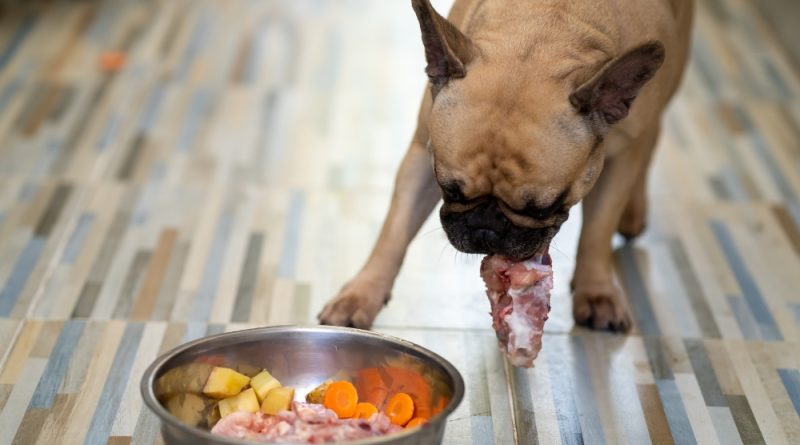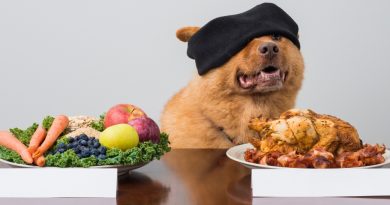What to cook for the dog?
There is currently a trend among pet owners to prepare homemade dog food. This style of diet has been shown to be a positive way to choose a healthy menu for pets. However, do you know which complementary foods can be offered to pets?
In this article, Fisio Care Pet Network has compiled a list of positive and negative foods for dogs. So, if you choose to create a diet through homemade dog food, you can opt for foods that will not harm your pet’s body and healthy life.
What to cook for the dog: Foods that are bad for dogs!
1 – Chocolate: Although it is a sweet temptation, chocolate is poisonous to dogs and can cause significant symptoms such as high body temperature, abnormal thirst, high agitation, irregular or faster heart rate, vomiting, tremors, and seizures.
2 – Onion: Onion damages the dog’s red blood cells, leading to worrying reactions such as weakness, anemia, red urine, and vomiting. Therefore, a negative alert for canine diets that focus on consuming human food.
3 – Garlic: Harmful if ingested in excess, it can cause serious damage to red blood cells, which can lead to anemia, vomiting, weakness, and red urine. However, it can be used in very small doses in seasoning and preparation of homemade canine foods.
4 – Grapes and raisins: These foods negatively affect the kidneys, mainly because pets cannot digest such foods. If ingested, you may notice reactions such as increased lethargy in the pet, drinking much more water, urinating more, and sometimes vomiting.
5 – Avocado: Avocado contains a toxin called persin that damages the heart and gastrointestinal problems, causing diarrhea and vomiting.
6 – Peaches and plums: Not recommended for dogs due to the pit present in the fruit. If swallowed, it can obstruct the intestines and cause cyanide poisoning.
7 – Nuts and macadamia nuts: These negatively affect the nervous and muscular system, causing an increase in the body temperature of pets, tremors, lethargy, weakness, and vomiting.
8 – Bread dough: Its consumption can cause alcoholic poisoning in a dog since fermentation occurs in the digestive tract. Be alert if your pet shows diarrhea, abdominal distension, vomiting, lethargy, disorientation, lack of motor coordination, difficulty breathing, seizures, tremors, and even a coma state after ingesting raw bread dough.
9 – Alcoholic beverages: Although obvious, it is important to emphasize that alcohol consumption by a dog can cause damage to the nervous system, with effects such as disorientation, lethargy, lack of motor coordination, diarrhea, vomiting, difficulty breathing, seizures, tremors, and even a coma state.
What to cook for the dog: How to choose healthy foods for your pet?
It is necessary to consider that dogs have a predator history. That is, much of their diet over the centuries has been based on meat, as fat provides essential nutrients for organ function.
The ideal is always to think of a strategy for the pet to reach the necessary amount of proteins and vitamins to stay healthy with the new natural diet. For this, it is possible to bet on composing menus with the following foods:
1 – Meats: Beef, pork, liver, chicken, lamb, and fish are excellent options for composing a natural menu for dogs. Of course, always cooked with water and with the minimum acceptable amount of salt. No seasonings…
2 – Fibers: Oat flour is an excellent source of fiber for dogs with irregular bowel problems. The only restriction on the use of this type of food is not to cook the flour or add any amount of sugar.
3 – Vegetables: They are also rich in fiber, provide vitamins and minerals, and have a low-calorie and low-fat content. It is a very positive option to prevent the pet from gaining weight or having problems with joints and circulation, improving the digestive system and helping to regulate bowel function.
Check which vegetables are positive to offer to pets:
- Pumpkin;
- Zucchini;
- Asparagus;
- Potato (sweet, yacon, and common);
- Eggplant;
- Beet;
- Broccoli;
- Carrot;
- Chayote;
- Cauliflower;
- Collard greens;
- Kale;
- Peas (not canned);
- Spinach;
- Yam;
- Jiló;
- Carrot;
- Cabbage;
- Okra;
- Radish;
- Parsley;
- Tomato;
- Bean.
Ideally, in this type of food, they should be prepared as a puree, raw or cooked, cut into small pieces, and, especially, without salt.
4 – Fruits: They are also welcome; however, it is recommended to remove all seeds, as they can cause intoxication. They should also be offered in small portions, especially those rich in sugars. This is because dogs do not metabolize sugar very quickly, and excessive consumption can leave them overweight.
Most beneficial fruits for dogs are:
- Banana;
- Persimmon;
- Apple;
- Pear;
- Strawberry;
- Guava;
- Mango;
- Kiwi;
- Blueberry.
What to cook for the dog: Never forget to consult a specialist!
Before making any changes to your dog’s diet, the owner must consult a veterinary nutritionist. Only he will be able to advise you correctly on which foods are ideal for your dog’s new routine, after all, each pet has its own organism and conditions.
In addition, the specialist will be able to indicate the size of the portions and the number of times the pet can consume the chosen foods.
It is important to understand that even if the dog ingests allowed foods, they can develop an allergy. If your pet shows any type of excessive and atypical behavior after eating, it may be a sign of an allergic reaction.
In any case, the search for a diet based on homemade dog food is quite a challenge in changing the pet’s routine. Therefore, always seek help and healthy preparation methods so that your pet can gradually get used to its new feeding routine.
Now that you know what to cook for the dog, use the tips to take even better care of your little dog; he trusts and depends on you for that.




